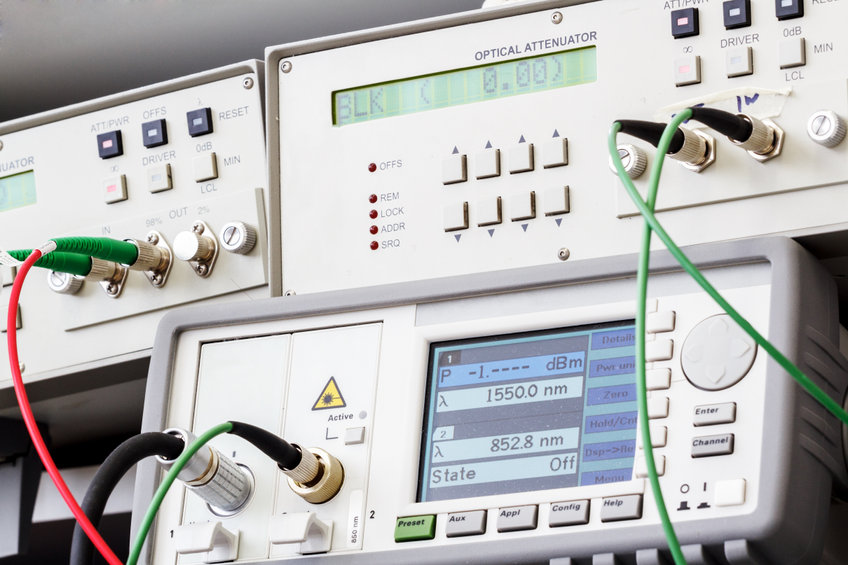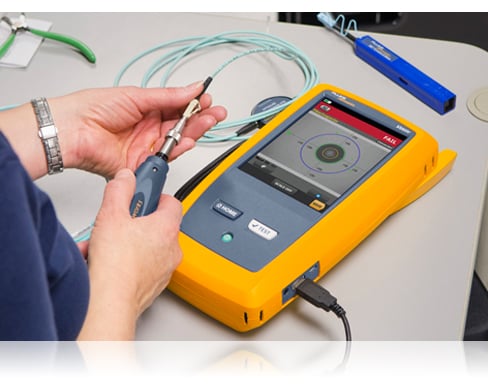High-quality ofda systems provide precise fibre testing and consistent results.
Exploring the Conveniences of Optical Fiber Evaluating for Enhanced Interaction Solutions
The importance of optical fiber screening in contemporary interaction systems can not be overstated, as it functions as a foundation for making certain network integrity and performance. Making use of sophisticated approaches such as Optical Time-Domain Reflectometry (OTDR) and insertion loss evaluation, organizations can not just determine faults yet also maximize their setups. This proactive screening approach has extensive implications for signal top quality and operational performance, raising the inquiry of how these techniques add to long-lasting sustainability in an ever-evolving technical landscape. Comprehending these characteristics is vital for stakeholders intending to preserve an affordable edge.
Value of Optical Fibre Screening
The value of optical fibre testing can not be overstated in today's data-driven environment. As companies progressively rely upon high-speed information transmission for daily operations, the honesty and performance of optical fibre networks are extremely important. Evaluating makes certain that these networks can sustain the vast amounts of data produced and transferred effortlessly, cultivating reliable communication and connectivity.
Optical fibre testing serves several vital features, consisting of validating installation quality, identifying potential faults, and identifying overall system performance. Regular screening can protect against pricey downtimes and solution disturbances, permitting companies to preserve functional continuity. It aids in compliance with sector criteria and guidelines, making sure that fibre optic installations satisfy called for requirements for safety and security and reliability.
In addition, testing can boost the longevity of fiber optic systems. By proactively recognizing concerns such as signal loss, depletion, or port failings, organizations can deal with troubles before they escalate, hence prolonging the life of their facilities. In recap, optical fiber screening is not merely a technological demand but a strategic financial investment that enhances network integrity, maximizes performance, and ultimately sustains the growth and performance of modern interaction systems.
Secret Examining Techniques

OTDR is a crucial strategy used to identify faults, action splice losses, and evaluate the general honesty of a fibre optic web link. By sending a pulse of light down the fiber and assessing the mirrored light, service technicians can determine locations of faults and examine the network's efficiency over fars away.
Insertion loss testing determines the quantity of signal loss that takes place when light go through a link or splice. This method is vital for verifying that links satisfy specific loss limits, which is essential for maintaining ideal performance in interaction systems.
Optical return loss screening evaluates the amount of light mirrored back towards the source due to imperfections in the fibre or connections. High return loss values indicate better performance and decreased signal deterioration.
Together, these testing techniques offer an extensive analysis of fibre optic networks, ensuring their reliability and functionality in diverse interaction applications.
Influence On System Efficiency
Reliable optical fiber screening directly influences the overall performance of interaction systems. By ensuring the honesty of fiber optic wires, screening determines prospective faults such as attenuation, splice loss, and adapter imbalance. These problems see this here can substantially break down signal top quality, resulting in interruptions and lowered information transmission speeds.

Additionally, normal optical fiber testing adds to long-lasting system sustainability. It makes it possible for early discovery of wear and tear, permitting timely upkeep and upgrades prior to major failings occur. This not just lengthens the life expectancy of the framework however also makes sure that interaction systems stay affordable in regards to performance.
Cost-Effectiveness and Performance
Cost-effectiveness is an essential factor to consider in the release and maintenance of optical fibre networks. Applying robust optical fibre screening treatments can substantially reduce operational expenses by recognizing issues before they intensify right into significant problems. optical fibre diameter analyser. By spotting mistakes, depletion, and various other efficiency hindrances early, organizations can prevent expensive fixings and downtime, which can interfere with services and result in income loss
Furthermore, efficient screening methods enhance discover this info here the installation process, permitting service technicians to work better. This equates to lower work expenses and faster project conclusion times. Advanced testing equipment, such as Optical Time Domain Name Reflectometers (OTDRs), allows a precise analysis of fibre high quality, ensuring that just optimal products are utilized, thus lessening waste.
Regular testing likewise adds to much better resource appropriation. By comprehending the network's performance, companies can make informed choices about upgrades and developments, guaranteeing that investments are made where they are most needed. In summary, optical fiber testing boosts cost-effectiveness and efficiency, sustaining the long-term sustainability and competition of interaction systems in a progressively requiring market.
Guaranteeing Long-Term Integrity
Implementing extensive optical fiber testing not only boosts cost financial savings and functional efficiency however additionally plays a critical function in ensuring the long-lasting dependability of interaction networks. Consistent testing techniques, consisting of attenuation and data transfer analyses, assistance identify potential deterioration in fiber efficiency before it results in service disturbances.
By using advanced testing methods, network drivers can determine mistakes or weak points in the fibre infrastructure, permitting timely removal. This proactive approach reduces downtime, making sure that interaction systems continue to be useful and reliable. Normal screening adds to the advancement of a much more durable network, as operators can adapt and optimize their framework based on real-time information understandings.
Furthermore, making sure compliance with sector criteria via optical fibre testing reinforces the quality and honesty of the whole communication system. This adherence not only bolsters self-confidence amongst stakeholders however also straightens with governing demands, which are progressively stringent.
Verdict
Finally, optical fiber testing works as a basic element in enhancing interaction systems. By utilizing various screening techniques, such as OTDR and insertion loss assessments, networks can attain ideal performance and integrity. The positive identification of faults not just enhances signal quality yet likewise reduces downtime, inevitably contributing to cost-effectiveness and functional effectiveness. Adherence to market standards cultivates stakeholder confidence, making certain the long-lasting sustainability of interaction infrastructures in a significantly data-driven landscape.